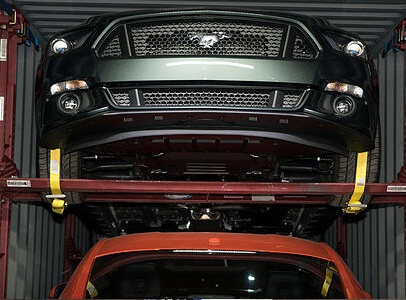
In the automotive logistics industry, the debate continues to rage. How to transport cars in the safest and most cost effective way? Moving expensive vehicles from A to B is enough to make anyone feel slightly pale, and that’s without the difficulties of factoring in risk assessments, insurance, and timescales. Here’s a quick list of why container shipping may just be the answer.
1) Reduced Handling Requirements
In an ideal world, we would have teleporters that would translate our goods from China to the US in the blink of an eye. Alas, this technology remains in its earliest, most wobbly stages. A close second is simply packaging up the item in to a safe, protective envelope and sending it through the post.
In our universe, containers fulfil that role.
Multimodal in their design, a product can leave the factory floor and travel to a showroom on the other side of the globe via ship, rail, and road, without the safety seal being broken. This reduced handling requirement means that there are fewer opportunities for human error to result in disaster. Easy, quick, and with minimal fuss, containers are an infrastructure that has already learned the ropes.
2) Reduced Damage to Stock
One of the appeals of container transportation is that when it is done correctly, safety is high. Water-tight, rust-proof, and structurally sound, containers are designed to withstand the forces that humans and nature throw at them.
With proper securing, vehicles can be stored in a way that ensures that kinetic forces are absorbed by the framework. This is something that traditional RORO ferries are unable to offer, but which containerised compartments using an ergonomic R-RAK promise in abundance.
3) Reduced Transportation Costs
Any strategic plan requires careful consideration of costs. Previously, container transport made little sense in the auto industry. With an average load of two vehicles per container, the costs were prohibitive.
However, economies of scale have been transformed by the introduction of technologies that enable an average of four cars to be transported in each container. It is an economy that keeps on giving: the lower berth of container ships mean that they have a greater variety of docks to choose from than ROROs, and can use almost any shipping lane. This means that subsequent land transfer distances can be reduced, thereby reducing overall costs.
4) Ecological Impact
Everyone knows that CSR (Corporate Social Responsibility) is important, and it’s unlikely that the shipping industry is going to shift from that limelight anytime soon.
Transporting goods has therefore become a question of determining the most sustainable methods. Container shipping, which is able to reduce distances, is one practical step. Increasing the storage capacity of each container is another.
Importantly, R-RAK adds a further element. Unlike older wooden frames, these racks can be reused ad infinitum, and, when folded, 60 can be transferred in a single container. As such, they represent significant efficiency in an otherwise inefficient industry.
5) Speed
At the end of the day, as long as companies know that the product is going to be handled safely, the ultimate tick-box is speed. This is an area that containers have been excelling in since their inception in the 1950s. Container speed is down to two core variables.
Firstly, the berth means that ships can traverse the majority of shipping lanes and access the majority of docks.
Secondly, the multimodality means that a single journey from A to Z - via any combination of letters in-between – can be carried out swiftly. National infrastructures are already primed for containers. The only variable is what we put inside them.
Closing Thoughts
There are many benefits to container transport. That’s why 40ft metal boxes dominate the international transport landscape. Their ease of use, cost-effectiveness, and rigorous infrastructure mean that most industries do not give a second thought to using this method. Now that a practical solution for transporting vehicles has arrived, it’s time to translate this into greater efficiency, reliability, and sustainability.















